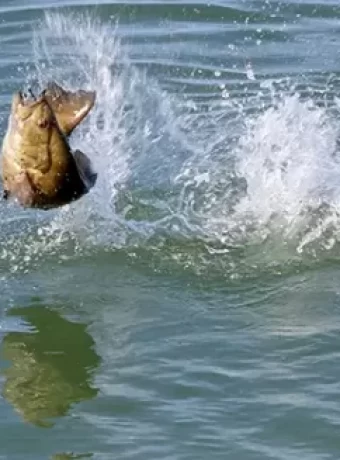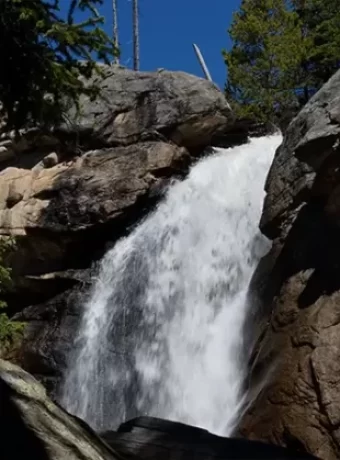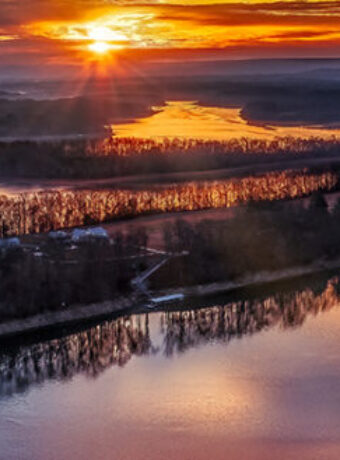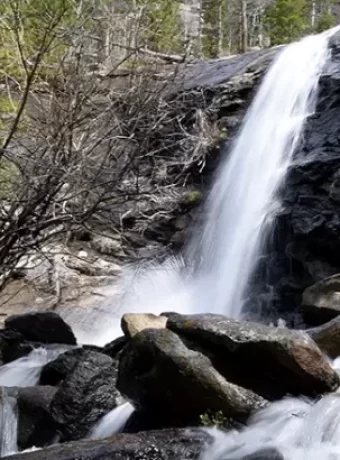A Guide to Climbing Colorado 14ers
Ever dreamt of touching the sky? How about climbing up to it instead? Imagine standing on a mountaintop, surrounded by miles of Colorado’s majestic wilderness. Welcome to the exhilarating world of Climbing Colorado 14ers. I personally have to say, alpine hiking and climbing 14ers, 13ers and 12’s were some of the most incredible experiences. Just saying personally.
The journey is challenging, no doubt – high elevation gains that test your endurance and tricky terrains keeping you alert with every step. But let me tell you from experience, reaching that summit is an unmatched thrill of climbing 14ers in Colorado.
This guide will be your compass as we navigate through crucial aspects like choosing the right mountain based on difficulty levels and personal fitness or gearing up for success with essentials like water bottles and protective clothing. Climbing Colorado 14ers is beautiful, but don’t for get the 13ers as well.
We’re also going to share some safety tips for those unexpected wildlife encounters during your adventures on popular peaks like Quandary Peak or Mount Elbert. Stay tuned, there’s plenty of ground—or should we say height—to cover!
I didn’t start hiking 14ers till I was 59 and out of shape from sitting behind a desk. Moved to 9k foot in elevation and start a hiking and get back in shape program. I have always hiked, backpacked, camped and hunted all my life. This was a fun 6 year adventure of exploring Colorado. Pike’s Peak was my first. I drove it first, then hiked to Devils Playground from the Crags Trailhead.
Two weeks later four of use set out at 6 am for the 12 mile out and back from the Crags to Pike’s Peak. Altitude sickness is real and not fun. One in our party encountered altitude sickness at about 11,500 ft. in elevation and had to drop out. I have encountered others on the trail in this condition as well. Mount Yale there were a couple of folks this way. Be prepared and know your limits and listen to your body.
Climbing Colorado 14ers has been incredible experience.
Table Of Contents:
- Understanding Colorado’s Fourteeners
- Planning Your 14er Adventure
- Climbing Techniques and Safety Tips
- Popular 14ers in Colorado
- 14ers Front Range to Silver City
- Environmental Stewardship on Colorado’s 14ers
- The Challenges and Rewards of Climbing 14ers
- Climbing Colorado’s Most Technical 14ers
- Conclusion of Climbing 14ers in Colorado
- Colorado National Parks, Monuments, Wilderness Areas and Fly Fishing Destinations
Understanding Colorado’s Fourteeners
Climbing a fourteener, or a mountain that reaches an elevation of over 14,000 feet above sea level, is no small feat. But in the rugged wilderness of Colorado, it’s not just about reaching those high peaks; it’s also about navigating through challenging terrain and understanding the unique alpine environment.
Colorado boasts more than 50 mountains with elevations topping 14k feet. This gives adventurous souls ample opportunities to test their mettle against nature’s imposing giants. From technically demanding ascents like Longs Peak to gentler climbs such as Handies Peak – each summit offers its own set of challenges and rewards.
The Intricacies of High Alpine Climbs
Navigating high alpine terrains requires specific climbing techniques and a solid grasp on safety protocols. These ranges aren’t merely taller than others but they’re often characterized by sustained elevation gains that can be physically taxing even for seasoned hikers. If you have never hiked true alpine it’s a must do. Climbing Colorado 14ers Words can’t even describe it.
However, technical climbing isn’t always needed when tackling fourteeners; sometimes endurance trumps skillful maneuvering around rocky outcrops or snow-covered slopes. It’s important to remember though: regardless if you’re traversing dangerous terrains or scaling less risky trails – preparedness is key.
A Different World Above Tree Line Climbing Colorado 14ers
Beyond certain heights – typically around 11k-12k feet – trees struggle to survive due to harsh weather conditions coupled with thin air and poor soil quality. Thus begins the realm we call “alpine”, where low-growing plants reign supreme amidst rock-filled landscapes dotted occasionally by hardy mountain goats grazing on sparse vegetation.
This otherworldly environment might seem inhospitable, but it’s a fascinating ecosystem teeming with life. For those willing to brave the altitude and cold, this high-altitude wilderness presents an unforgettable spectacle of natural beauty.
Altitude Matters
The air up there is thin. It’s not just the lack of oxygen that makes breathing laborious at such heights; it’s also the dryness. Your body will have to work harder than usual – even for basic functions like digestion or temperature regulation.
Keep the dialogue alive. Let’s keep talking. Know your limits climbing Colorado 14ers.
Scaling Colorado’s fourteeners, mountains soaring above 14k feet, is a feat of endurance and adaptability. With over 50 peaks to choose from – each offering unique challenges – climbers need more than physical strength; they need an understanding of high alpine terrains and the changing ecosystems beyond tree lines. Always remember: preparation rules in this harsh yet captivating wilderness. So when you decide to take on these giants, make sure you’re well-prepared physically and mentally because it’s not just about reaching the top—it’s about embracing every step along the way.

Planning Your 14er Adventure
Climbing a 14er, one of Colorado’s high peaks over 14,000 feet above sea level, is an exhilarating adventure that requires careful planning. No worries – we’ve got you covered.
Essential Gear for a Successful Climb
A successful climb starts with the right gear. At this high elevation and in these summer months when most ascents are made, it’s essential to carry water bottles to stay hydrated on the trail. I recommend investing in good quality hiking pants and wool socks for comfort and protection against the elements.
Your rain jacket will be your best friend if the weather forecast predicts showers or a sudden downpour hits during your hike up Grays Peak or any other route you choose to tackle. Outdoor apparel line is my go-to source for reliable outdoor clothing like this for climbing Colorado 14ers. Learn more click here.
Our light weight sun protective hoodies are a UPF-50 with a sewn in facemask. Light weight hoodies make a great base layer. Hydrophobic quarter zip is a great outer layer. Take a look at the whole line, glove, leggings and more.
You’ll also want sun protection such as sunglasses and sunscreen because even though it may not feel hot at higher altitudes due to cooler air temperatures, UV radiation increases by about 10% every thousand meters climbed.
Choosing the Right Mountain Climbing Colorado 14ers
The first step towards reaching those bragging rights of having conquered a fourteener is selecting which mountain suits you best based on difficulty level and personal fitness levels. Climbing Colorado 14ers do your home work. Consult books and maps.
I can tell from experience that Quandary Peak has its popularity justified: it’s often hailed as one of Colorado’s easiest fourteeners due to its well-defined trail path coupled with less technical climbing involved, making it perfect for beginners. 14ers.com on Instagram showcases breathtaking photos of the peak for pre-climb inspiration.
If you’re an ambitious hiker looking to escape crowded trails and ready to take on more challenging routes, San Luis Peak or Mount Elbert are great options. Notably, Mount Elbert is Colorado’s highest summit at 14,440 feet. Start with easy first.
Remember, it’s important to…
Colorado 14er Tips:
Embarking on a 14er adventure in Colorado needs thoughtful planning. Start with the right gear – think quality hiking pants, wool socks, and essential weather protection like rain jackets and sunscreen. Choosing your mountain is next: pick based on difficulty level matching your fitness ability. Quandary Peak is beginner-friendly; Mount Elbert offers more challenge.
Climbing Techniques and Safety Tips
When it comes to climbing Colorado’s fourteeners, certain techniques can make your journey smoother and safer. Let’s talk about high alpine terrain, which brings unique challenges like thinner air and unstable weather conditions.
Climbing Techniques for High Alpine Terrain
Acknowledge the necessity of moderating your speed. In these altitudes above 8k feet, where the risk of altitude sickness significantly increases as Mountaineering Safety suggests, a steady pace helps your body acclimatize better.
Pacing doesn’t mean slow; it means consistent. Keep a rhythm that allows you to move without getting overly winded or needing frequent breaks. This approach lets you cover more ground while conserving energy for the final push towards the summit.
Aid climbing is another technique used on steep terrains with sparse handholds or footholds. Using gear such as cams, nuts, pitons, or hexes can help climbers ascend safely in tricky spots.
Safety Tips for Climbing Colorado 14ers
Safety starts before stepping onto the trailhead – checking local weather forecasts is crucial since conditions at high elevations change rapidly; clear skies could turn into storms within hours. So having rain jackets handy will keep those unpredictable showers from spoiling your climb.
In addition to braving erratic climate changes during an er hike also involves dealing with mountain goats often found along popular routes like Grays Peak or Torreys Peaks’ east ridge route.. Although they’re fascinating creatures native to this area , remember always maintain safe distance . Not only because wildlife must be respected but also their behavior may become aggressive if felt threatened by humans encroaching their space.
Be sure to bring along a well-stocked first aid kit, as minor injuries can become serious problems at higher altitudes if not treated quickly. The air is thinner at high altitudes, and minor injuries can become major issues if not addressed promptly. Your kit should include bandages, antiseptic wipes, tweezers for removing splinters or ticks, painkillers for headaches or sprains – it’s better to have these items and not need them than the other way around.
When tackling Climbing Colorado’s 14ers, a steady pace and proper gear can help you conquer high alpine terrain. Don’t forget to check weather forecasts before heading out – conditions can change quickly. Always respect the wildlife and pack an aid kit for unexpected injuries. Remember, preparation is key to safe climbing.
Popular 14ers in Colorado
If you’re an ambitious hiker looking for bragging rights, climbing a fourteener or ‘er in Colorado is a must-do. The state boasts over 50 peaks that exceed the magic number of 14,000 feet above sea level, each offering its own unique challenge and stunning vistas.
The picturesque views from these summits are truly something to behold. However, it’s not just about getting up there; it’s also about the journey itself – from selecting your peak and preparing your gear to navigating complex terrain under ever-changing weather conditions.
The Allure of Quandary Peak
Topping many lists as one of the most climbed mountains in Colorado is Quandary Peak. Situated within Summit County near Breckenridge Ski Area, this mountain offers breathtaking panoramic views making every step worth the effort. Hike Quandary the second week of September as the leaves were changing. Beautiful and the panoramas breath taking. I was surprised by the line of people and how unprepared a large percentage were.
But don’t be fooled by its popularity. Climbing any er requires careful planning and preparation. That means checking out detailed trail descriptions on sites like Fourteeners Initiative, staying updated with accurate weather forecasts, packing essential items such as a rain jacket and water bottle among others – oh yes. Don’t forget those energy-packed trail mixes too.
This a beautiful hike. But Quandary Peak I must say is the only place I have encountered the most unprepared group of hikers in my life. I had taken an extra gallon of water for some reason and ended up giving it all away before I was a third of the way to the summit. Food as well gone. I the way back down came across a search and search and rescue person. He was on his way up, some had bonked out due to dehydration. I can’t say it enough be prepared.
A major factor contributing to Quandary’s appeal is its accessibility throughout summer months when trails are typically clear of snowfall but do remember that altitude sickness can kick in above eight thousand feet so acclimatization plays an important role here.
Sky High at Mount Elbert Climbing Colorado 14ers
No list would be complete without mentioning Mount Elbert, the highest peak in Colorado at 14,440 feet. It’s an er that every hiker dreams of conquering. Located within San Isabel National Forest near Leadville and part of Sawatch Range, this mountain offers a non-technical route making it feasible for fit beginners.
But don’t be put off by its high elevation. Don’t be intimidated by the lengthy journey; take on this challenge. A hike I looked forward to
Mount Huron and the Collegiate Peaks
Mount Huron is the easiest of the 14ers. That I summited in my opinion.
Mount Yale and Missouri I found to be the most strenuous for me. Both Awesome hikes, Mount Yale a little to crowded. I have hike all the trails into the Collegiate Peaks from Denny Creek Trailhead. Mount Missouri is on the Clearwater Lake side. Some cool ghost towns on that side, another time.
I guess there is no other way to put this, Don’t Be A Dumb Hiker! If hiking with humanities best friend and yours. Granite is sharp. Put booties, or hiking shoes for your dog, on them. I have seen too many have to be packed out. They will thank you later.
Another thing to remember is lightning rolls in quick and seems constant of noon to two pm. Two of the summits shortest visits was Mount Yale and Elbert. Elbert had bolts of lightning passing over head for a good twenty minutes as I headed for cover in the down pour.
14er’s Front Range to Silver City Climbing Colorado 14ers
14ers in Colorado can be found in several of the mountain ranges.
All time favorite location is Chicago Basin, a 5 day backpack trip. There are 3 – 14ers: Sunlight (14,059 ft.), Eulos Peaks (14083), and Windom (14082). Incredible scenic climbs. And the train ride from Durango or Silver City to the trailhead is cool.
If rugged and a spiritual experience is what you are looking for the Sangre De Cristo Range is the peaks and more. Home to Great Sand Dunes National Park, town of Crestone and a great brewery. Town of Crestone is a moving experience more later.
Colorado 14er Tip:
Ready for an epic adventure? Conquer a 14er in Colorado. With over 50 majestic peaks to choose from, you’ll have plenty of bragging rights. Popular choices include Quandary Peak and Mount Elbert. Just remember: the journey isn’t only about reaching the summit but also preparing well – think gear, weather forecasts, trail descriptions. And don’t forget to fully understand your abilities before embarking on this exciting venture.
Environmental Stewardship on Colorado’s 14ers
Climbing a 14er is no small feat. But it’s not just about the thrill of conquering high peaks or bragging rights; it also comes with responsibility. As stewards of these stunning landscapes, we must respect wildlife and follow guidelines set by organizations like the Leave No Trace (LNT) and Colorado Fourteeners Initiative.
The alpine environment atop Colorado’s fourteeners is fragile, susceptible to erosion and littering. Each year, nearly 300k people attempt to climb a fourteener in Colorado – that’s an enormous potential for impact. Let’s explore how you can minimize your footprint while still enjoying your adventure.
Your Gear Matters
A common saying among climbers goes: “Take only pictures, leave only footprints.” It starts with what you bring up there – think reusable water bottles instead of single-use plastics. Pack light but smartly: sun protection like hats or sunglasses are essential due to the thin atmosphere at high elevation.
Hiking pants should be durable enough to withstand sharp rocks without tearing; wool socks will keep your feet warm even when wet from snowmelt streams or sudden showers—always check the weather forecast before heading out.
No Trace Camping & Hiking
LNT principles are fundamental for maintaining environmental integrity during your ascent. If camping overnight along an er route, always use established campsites where possible to avoid trampling delicate vegetation.
You’ll likely encounter mountain goats on many popular trails such as Grays Peak or San Luis Peak – maintain safe distance and never feed them human food as this can cause health problems for animals used to eating only natural forage.
Trail Etiquette
will not only help you dodge the heavy traffic but also let you enjoy a serene, undisturbed trek. It’s all about being smart and considerate in these shared outdoor spaces.
Scaling a 14er in Colorado offers both thrill and challenge. But don’t forget, we’re not just adventurers here – we also have the responsibility to take care of these breathtaking landscapes. Let’s abide by guidelines from groups like LNT and the Colorado Fourteeners Initiative to safeguard this fragile ecosystem. Make sure you pack with eco-friendly gear, show respect for wildlife along your trek, and uphold trail etiquette.
The Challenges and Rewards of Climbing Colorado 14ers
Ascending a Colorado fourteener is no walk in the park. It’s an adventure, often demanding physical endurance, technical climbing skills, meticulous planning, and respect for Mother Nature. But the rewards are as immense as these mountains themselves.
The Rewarding Experience of Reaching a Summit
Tackling one or more of Colorado’s high peaks can be life-changing. Each step up its rocky terrain pushes you beyond your comfort zone; each breath at that altitude demands determination and willpower. And then comes the summit – it feels like standing on top of the world.
This exhilarating sense of accomplishment makes every struggle worth it – elevation gain tackled, difficult peaks conquered. As per records from avid climbers, six out most technical peaks require a Class 4 climb by their easiest route.
But let’s not forget: With reward comes responsibility too. Our actions have consequences – we should tread lightly to preserve these magnificent natural wonders for future generations.
Navigating Through Challenges Climbing Colorado 14ers
Climbing any fourteeners involves overcoming several challenges along with embracing nature’s surprises en-route—be it sudden weather changes or unexpected encounters with mountain goats.
An understanding about weather forecast becomes essential before you set foot on any er route. Even during summer months when conditions are typically favorable (June through September), afternoon thunderstorms are common above treeline; starting early helps avoid getting caught in them. Packing right is another crucial aspect to consider while embarking on such ambitious hikes: adequate water supply stored in sturdy water bottles, rain jacket for unforeseen showers or storms, sun protection including hats & sunscreen lotion come highly recommended along with warm layers, protective clothing, hiking pants, and wool socks.
For example, Quandary Peak is frequently seen as a suitable starting point for those new to hiking. This decision should take into account your own fitness level and experience. Choose wisely, because each peak presents its unique set of challenges.
Conquering a Colorado 14er isn’t just an adventure, it’s a test of willpower and endurance. It requires meticulous planning, respect for nature, and physical grit. But the pay-off is monumental – standing atop the world feeling victorious. However, remember to be responsible; our actions affect these natural wonders. Make sure you’re always well-prepared by getting familiar with weather patterns.
Climbing Colorado’s Most Technical 14ers
Not for the faint of heart, these peaks challenge even seasoned mountaineers with their high elevation and steep ascents.
The Challenge of North Maroon Peak
Rising majestically above Aspen, North Maroon Peak offers a thrilling climb that demands respect from all who attempt it. The standard route is a Class 4 scramble up an east-facing slope fraught with loose rock and challenging terrain.
But don’t let this deter you – the reward at the summit is nothing short of breathtaking. A sea-level view won’t hold a candle to what you’ll see atop this mighty peak.
Tackling Pyramid Peak’s Infamous Slopes
A stone’s throw away from its sibling, stands another formidable fourteener – Pyramid Peak. Named aptly for its distinctive shape, tackling its infamous slopes requires more than just physical stamina; preparation plays a key role in conquering this beast.
You’ll need sturdy hiking boots to navigate boulder fields and wool socks for warmth when temperatures drop unexpectedly at such high elevations – trust me on this one. Oh, also pack enough trail mix; it could be your saving grace during those strenuous stretches.
Gearing Up For These Climbs
Packing appropriate gear can make or break your experience on these challenging summits. Alongside essential items like water bottles (stay hydrated folks.) and protective clothing (think: rain jacket), consider investing in quality hiking pants which offer mobility without compromising protection against rough terrains – knees, I’m looking at you.
In addition to the previously mentioned items, don’t forget to pack sun protection such as a hat and sunscreen. A hat and sunscreen are a must. Nothing ruins the bragging rights of conquering Colorado’s high peaks like a painful sunburn.
Wildlife Encounters
distance. You may just get lucky enough to spot some mountain goats along your journey. Remain aware of the necessity to maintain a secure separation.
Scaling Colorado’s North Maroon Peak and Pyramid Peak isn’t for the faint-hearted. These challenging 14ers demand respect, with their steep ascents and high elevations testing even seasoned climbers. Preparation is crucial – sturdy boots, warm socks, trail mix can be lifesavers. To successfully navigate these rough terrains, it’s essential to pack right – carry water bottles for hydration and don protective clothing including quality hiking pants.
Conclusion of Climbing 14ers in Colorado
So, you’ve explored the wild blue sky world of Climbing 14ers in Colorado. Now you’re familiar with what it takes to conquer these high peaks. Remember, your gear is crucial – don’t forget that water bottle or rain jacket!
The mountain selection? It’s a personal choice. From Mount Antero to San Luis Peak, each offers unique challenges and breathtaking views.
Keep those safety tips at heart too! Wildlife encounters can be thrilling but maintaining a safe distance is paramount for both parties involved.
We also discussed the importance of respecting our environment while pursuing such adventures – because protecting Colorado’s pristine alpine landscapes matters just as much as conquering them.
Last but not least: embracing the challenge! The climb may be tough but reaching that summit? Unforgettable. Start planning today and see where this exciting journey leads you tomorrow!
Colorado National Parks, Monuments, Wilderness Areas and Fly Fishing Destinations
Colorado is a state of unsurpassed remote beautiful destinations.






